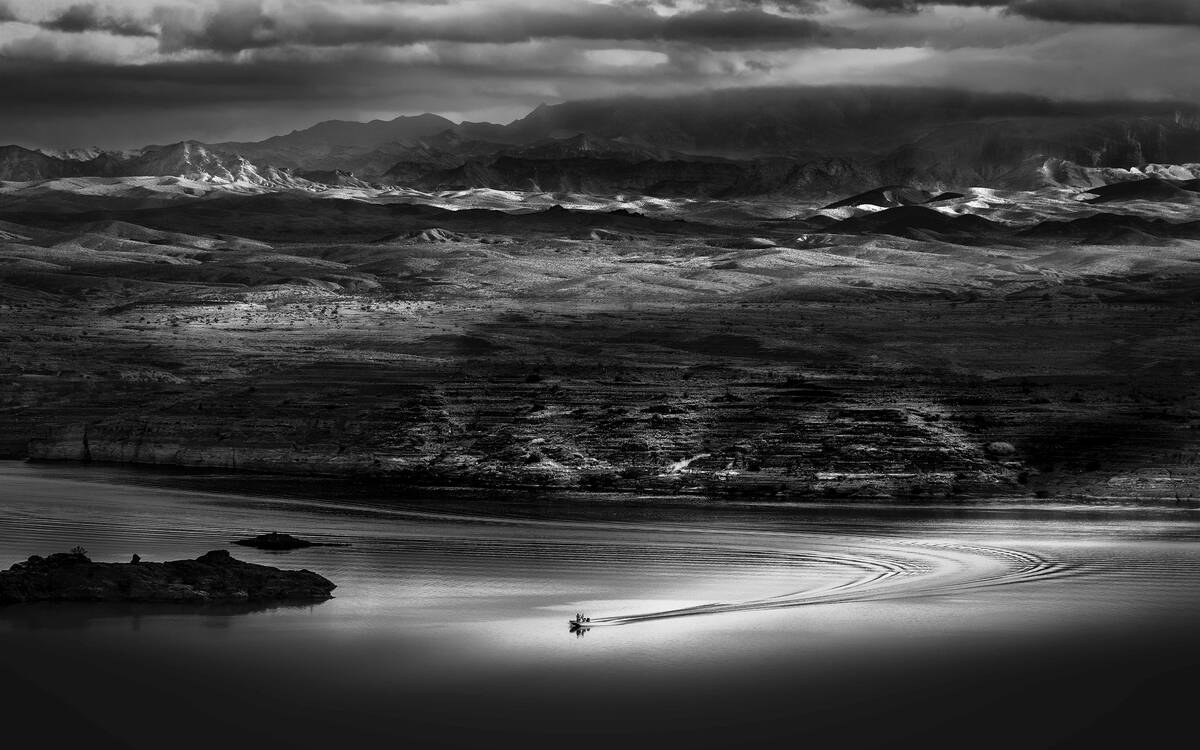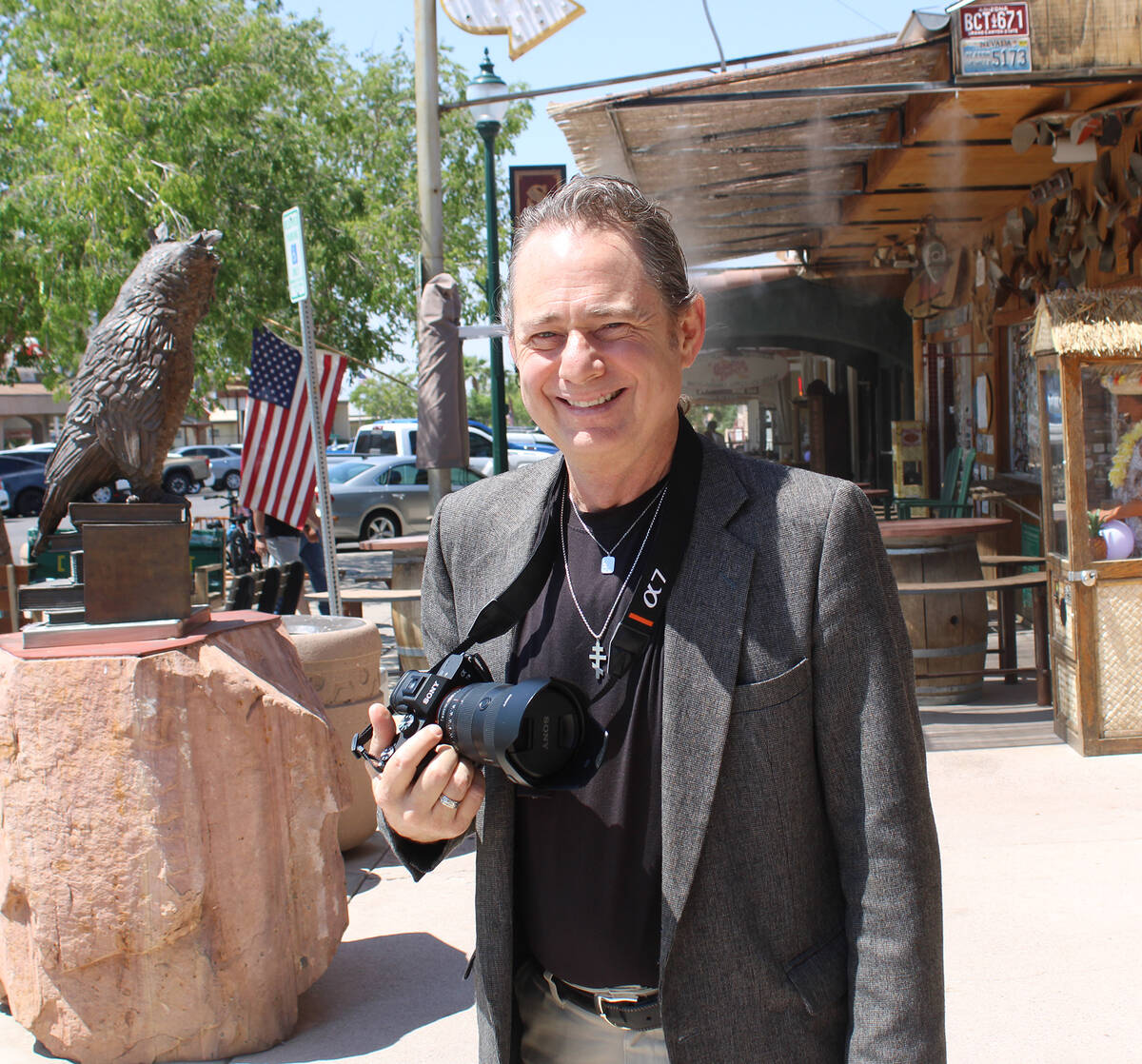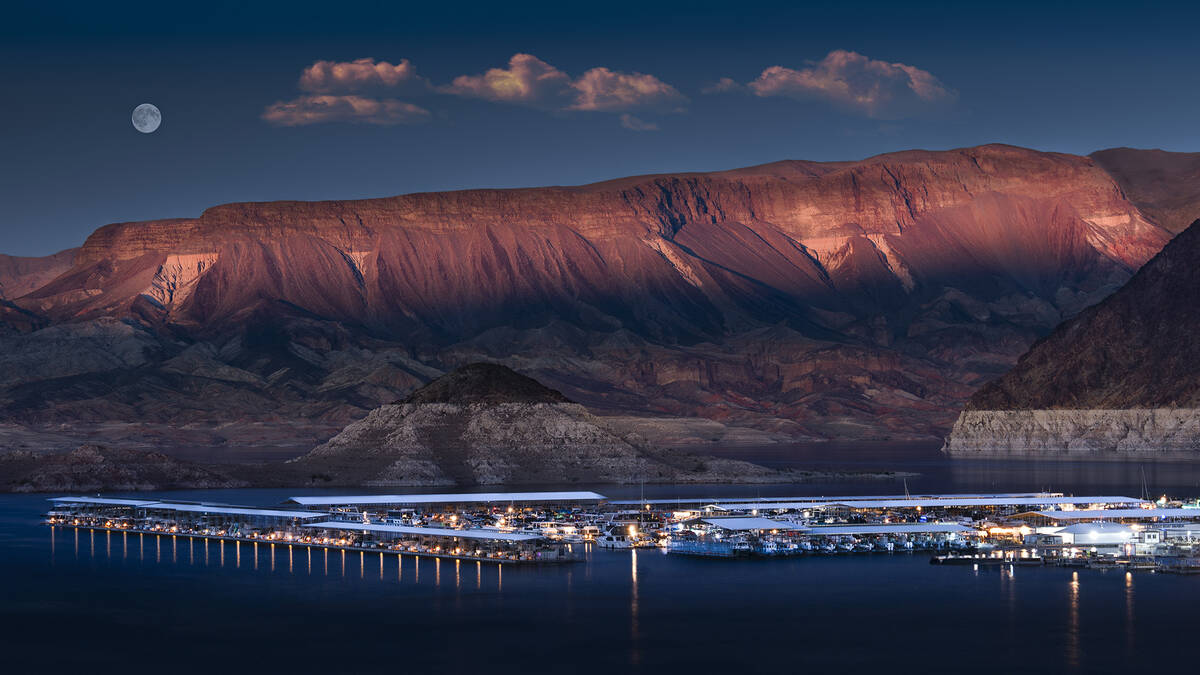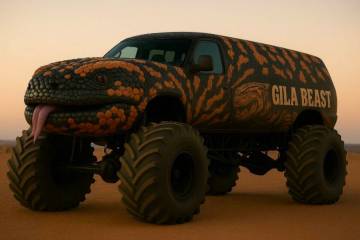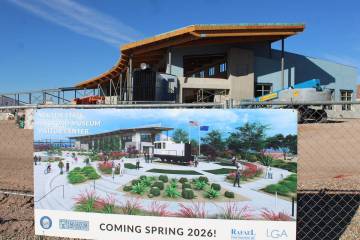Capturing life through the lens of a camera
If it’s true that a picture is worth a thousand words, it’s safe to say that Bill Bruninga has enough to fill an entire set of encyclopedias.
Over the years, Bruninga has taken thousands of photos and while he has excelled at nature photography, when asked what he enjoys shooting the most, he said it’s whatever captures his eye at that moment.
“Whether landscapes, cityscapes, public events, personal events, portraits, everything about life — getting the one image that captures the essence of the moment, unrecognized by others until seeing the image afterward — those are the most rewarding,” he said.
Earlier this month at the NPR/Desert Companion gala in Las Vegas, two of his entries were recognized in the 2024 Focus on Nevada photo contest, both of which he shot at Lake Mead. His photo of Hemenway Harbor captured first in the black and white category out of more than 500 entries, while another featuring a sunset on Fortification Hill, with the lake in the foreground, was awarded an honorable mention. Both his photos appear in the June edition of Desert Companion magazine. All entries had to be taken in Nevada.
Waiting in suspense
“I stayed focused on pulling photos from this past year,” Bruninga said. “I had some images that I knew would be suitable. It was tough competition.”
Submittals for the contest took place in March. The magazine’s art director did the initial curating of the nearly 4,000 entries in order to get it down to a manageable number in each category.
From there, a panel of judges independently went through and submitted a short list of their winners, which was later narrowed down to the first and second-place winners and honorable mentions. The finalists were contacted and invited to the gala, where the winners were announced that evening.
“I was notified but they didn’t tell me which of the three photos I submitted had won anything or even the categories,” he said. “There was a lot of suspense that night. After they announced the honorable mentions and then second place, that’s when I knew I had won. I was incredibly fulfilled, pleased and honored. What a great experience.”
Going into the contest, Bruninga said he had a bit of insight.
“Based on what I have seen in prior judging and critiques by professionals, I knew these images had the potential to win,” he said. “That includes awareness of what most judges are looking for. So, it was an educated opinion on my part that these images were likely going to do well.”
Beauty in all its forms
Bruninga first starting taking photos back in the 1970s while growing up in Denver, using black and white film, where he developed his photos in a darkroom, noting that “I can still smell the chemicals.” In the 1980s he bought his first high-end camera, which he used while in the U.S. Air Force, taking artistic pictures of the various aircraft. He served as an aerospace engineer, while today he’s a city utilities engineer for Boulder City.
“I’ve always enjoyed the grace and beauty of airplanes,” he said. “I enjoy capturing beauty in all its forms. That includes the natural beauty of the outdoors or of people. My goal is to always make people look good.”
As noted, his recent award-winning photo was one done in black and white, which can often be an artform unto itself when done right.
“The factors include the time of day, whether photographers gravitate toward sunrises or sunsets called the golden hour and the blue hour,” he said of shooting in black and white. “Those times can be especially good when revealing colors. There’s an old saying, though, ‘If the colors aren’t right, shoot black and white.’ Then there are times when colors are not needed. A big part of photography is telling a story and sometimes colors are not needed to tell that story.
“That particular morning there were not good colors. It was a black and white morning sunrise. There were spectacular clouds, light beams and flat water, which is great for reflections. I was out before sunrise. The lake was glassy, with an occasional boat causing a beautiful wake behind, undisturbed by waves or wind. The landscape was great, but if there’s an opportunity to get some type of action in a photo, even better. It was the perfect scenario for that photo.”

